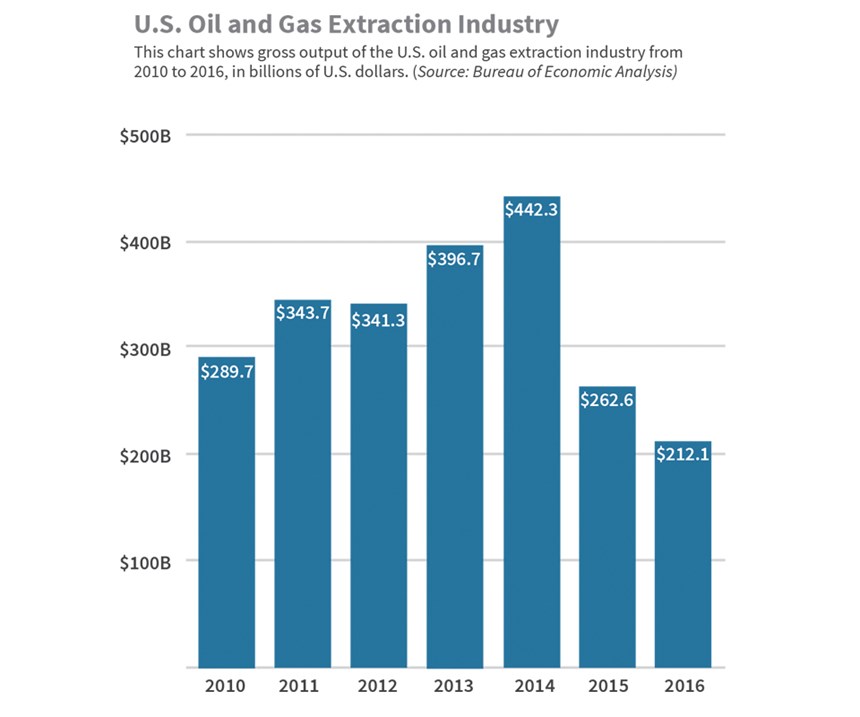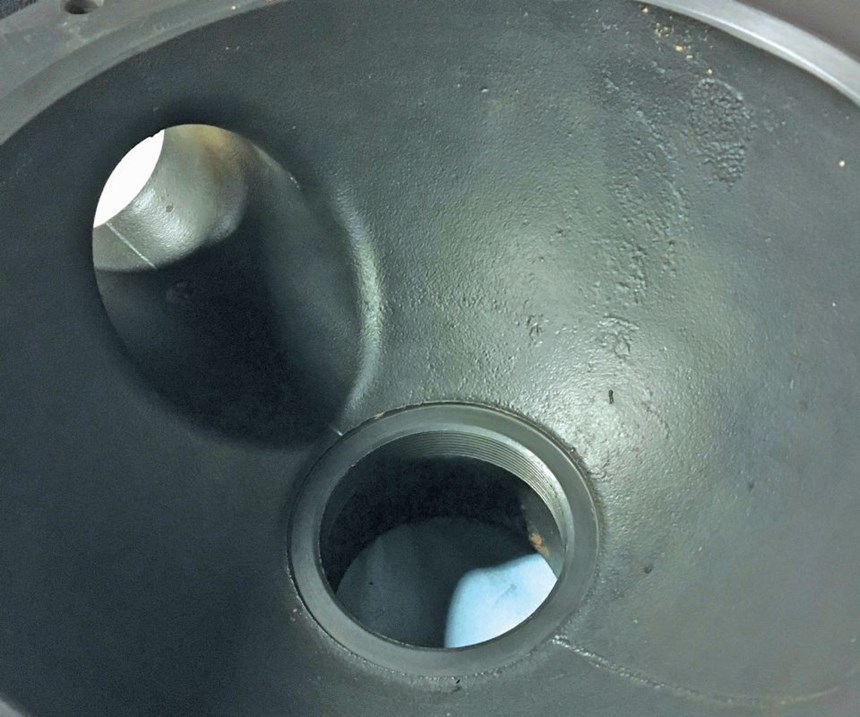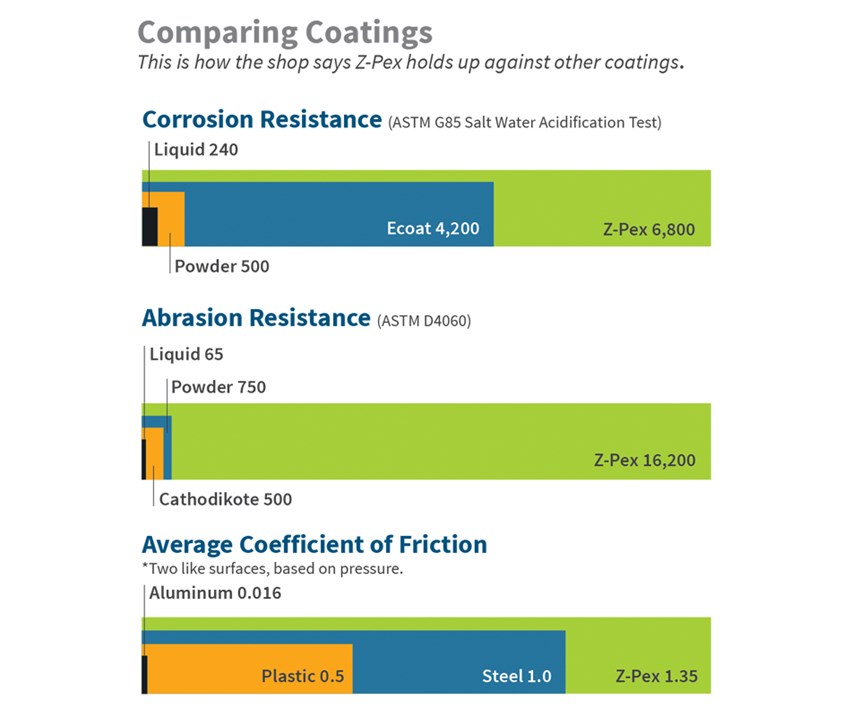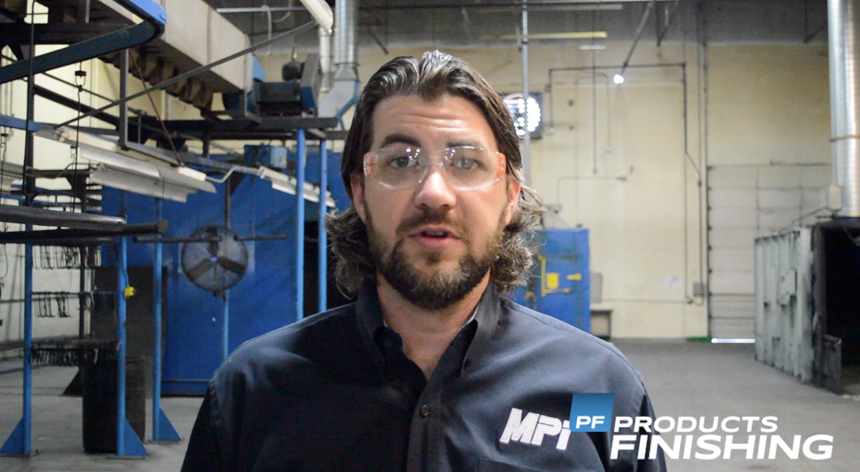In Adam Adkisson’s eyes, there is no bad time to be in the oil and gas industry, if you are a custom coater.
The executive vice president of family-owned Metal Processing International in Mission, Texas, and of Oklahoma Custom Coating in Seminole, Oklahoma, says business is great when the oil and gas industry is booming. and when oil and gas is not growing, the coatings market is still good, because that is when customers want the best coatings in order to make their equipment last even longer.
Featured Content
“The industry has been very good for us,” Adkisson says. “When its $100 a barrel, our customers are looking for another well to drill; when its $50, they are looking for ways to cut costs and expenses.”
One reason both of his coating companies have thrived is because they have developed numerous proprietary coating products, but in particular it is thanks to a product called Z-Pex. This product features an electrocoat base and a specialized topcoat with an extremely low coefficient of friction, very high abrasion resistance and resistance to corrosion from more than 120 chemicals commonly found in the petroleum industry, including hydrogen sulfide, hydrogen chloride and carbonic acid—some of the most corrosive products that exist today.
Adkisson says that, unlike normal single-component coatings used in the oil and gas industry, Z-Pex is made up of a system of interdependent thin-film coatings working together to provide unique protection in extreme environments.
A Holistic Coating System
“Z-Pex is really the first holistic coating system designed to exceed the needs of the oil and gas industry,” he says. “And chemical resistance is key to survival in the oil and gas industry.”
That is especially true of the internal parts of high-value items like pumps and valves, in which the components need to be coated and put back together with a proper fit.
Z-Pex is essentially a 10-stage pretreatment and ecoat primer immersion process followed by a bake. The system is finished off with a fluoropolymer topcoat that is permanently cross-linked to the ecoat primer to form an extremely corrosion-resistant coating.
“The entire process prevents the coating from chipping or peeling, and prevents corrosion from creeping under the coating,” Adkisson says. “The results are really impressing people and turning heads, and it’s usually half the price of stainless steel and can last up to seven times longer.”
That’s important, since oil and gas companies are always looking for better protection of their investments. John England with the Deloitte Center for Energy Solutions says the world economy is midway through the fourth full year of a crude oil downturn.
“From an energy perspective, we were busy watching OPEC extend its cuts and adhere to them, U.S. producers increase production and keep costs down, and demand increase enough to give us hope but not yet enough to really move the needle,” he says.
Strong Oil and Gas Sector
Yet England also says 2017 was the year that the U.S. finally came into its own as an energy exporter. While gross output of U.S. oil and gas topped out at $443 billion in 2014, it quickly fell to $262 billion in 2015 and $212 billion in 2016 as the glut of oil worldwide caused production to drop dramatically. Pay no heed, experts say.
“We saw U.S. exports of crude, as well as liquefied natural gas and refined products continue to rise (in 2017),” England says. “This rise aligns nicely with the new administration’s motto of ‘energy dominance’ for the United States.”
David Blackmon, an independent energy analyst and consultant based in Mansfield, Texas, wrote in Forbes magazine in January that the state of the oil and gas industry in the U.S. is strong currently and will be for the foreseeable future.
“Yes, ‘strong’ is a good word for it,” Blackmon says. “As in, surprisingly strong, unexpectedly strong, stronger than the industry had any right to realistically hope for as the year dawned 12 months ago.”
All of that is great news for Metal Processing International (MPI) and Oklahoma Custom Coating (OCC), the latter of which specializes in not only oil and gas, but also HVAC, aerospace and defense, and general industrial markets, offering more than 180 products and employing more than 160 workers.
OCC is the original shop owned by Adkisson’s father, Sam. In 2005, they expanded to South Texas and leased a 46,000-square-foot building in McAllen. MPI was born when OCC installed an ecoat line it had purchased in Mexico from GE. The Adkissons added a “chemical-agent-resistant coating” line to process military coatings for client BAE Systems in the plant a while later. In 2010, they expanded again and purchased a 101,000-square-foot building from Frito Lay. Today, MPI operates two ecoat lines—one 30 feet long with a 7-ton capacity—and offers ecoat, liquid and powder coating, and chemical conversion coatings. Both MPI and OCC are run by the same management teams.
Seeking Better Alternatives
The growth in the oil and gas industry led to the need for the shops to develop their own proprietary coating processes in house. They started development of Z-Pex in 2012 and now own four patents on the technology. Some of those patents cover the deposition of ecoat to the interior diameter of oil and gas pipes.
“We had been performing ecoat operations for some types, and it was very chemical-resistant,” Adkisson says. “But when it came to the high-flow areas where solids may be passing through the pipes, we discovered we weren’t very abrasion resistant with that 1 mil of ecoat.”
That set the teams at OCC and MPI on a path to find a coating process that was chemical- and salt-water resistant, and had a low coefficient of friction so that abrasion resistance also was improved.
Without chemists or engineers on staff, the companies turned to experts at supplier companies to help them come up with a process that could meet their coating requirements and then some. They found a willing partner in Axalta Coating Systems, which was just launching an AquaEC 6100 ecoat line that seemed to exactly match what OCC and MPI needed. AquaEC 6100 serves as a strong primer coating that bonds well with the protective fluoropolymer top coat.
Jeff Paxson, Axalta area sales manager, worked with OCC and MPI to test the product, which the companies introduced at the 2016 Electrocoat Conference.
“It was a very unique partnership with OCC and MPI, because they were our market commercialization stream for the AquaEC 6100 product, and we worked very close with them on refining their needs and our new product line,” Paxson says.
Axalta’s Cathodic Epoxy Ecoat Primers
In 2014, Axalta combined its well-established ecoat products under the AquaEC brand name in order to meet requirements of increasingly diverse substrates, part designs and pretreatment options. The AquaEC 6000 series is a line of cathodic epoxy ecoat primers that combine enhanced epoxy resins and a tin-free catalyst, designed for end-use markets including automotive and other diverse industrial applications. Axalta says AquaEC 6100 was the first ecoat in North America to conform to the NSF-51 standard relating to products and materials that come into contact with food and drinking water. AquaEC products can be coated from 12 to 40 microns with a throw power of 200 mm.
“We set a goal with AquaEC technology to go beyond developing and delivering a great product by focusing as well on ways to increase the profitability of each customer,” says Michael Cash, Axalta’s president of industrial coatings. “We’ve made sure to stick to our values of partnership and complete dedication to the success of each of our customers.”
That’s why Axalta jumped in to help OCC and MPI with its 6100 product before it actually fully launched to the world market: the customer needed a product that Axalta knew could solve many of its corrosion and abrasion problems.
Paxson said that the AquaEC 6000 series was originally designed specifically for automotive use, but when OCC and MPI began explaining their needs in oil and gas, Axalta quickly saw an area into which it could expand the ecoat product.
“When you find an innovative coater who wants to take your product into a new commercialization stream, you want to give them the support they need,” Paxson says. “And when you look at oil and gas, it is probably a $1 trillion-plus market, especially for the downhole market.”
And Cash says Axalta’s main goal goes beyond developing and delivering products. “Our goal is to increase the profitability of each customer,” he says. “That means following up on a sale with customer service and support that will help our customers succeed.”
The Unstoppable Force
Paxson spent quite some time in the OCC and MPI facilities helping Adkisson get the application process down correctly, which he says wasn’t easy, but eventually yielded extremely satisfying results.
The immediate requirement of the coating was to provide corrosion protection to 100 percent of each oil and gas component, which meant getting into tight recesses and threaded areas. Once the shops saw that AquaEC 6100 met that need, they moved on to solve the coefficient of friction issues with a protective fluoropolymer layer that bonded well with the ecoat primer to produce a uniform film across the entire surface of the component.
However, “erosion is an unstoppable force,” Adkisson says. With other products, there were abrasion issues caused by the physical interaction between the finished surface and the fluids passing over it; fluids with a high content of solids produce increased abrasion and accelerate the erosion effect.
“We found that Z-Pex decreases the energy required to move fluid by lowering the coefficient of friction within a system,” Adkisson says. “And it prevents galling of threads.”
In the ASTM D4060 abrasion testing that OCC and MPI had done on test parts, those coated with Z-Pex scored 16,200 for abrasion resistance, while powder-coated parts scored 750, ecoated scored 500 and liquid-coated 65. In ASTM B117 salt spray tests, Z-Pex came in at 3,800, while ecoat was 1,000, powder 250 and liquid 120. Perhaps most importantly, in coefficient of friction testing, components coated with Z-Pex scored 0.016, plastic parts 0.5, steel 1.0 and aluminum 1.35. Z-Pex adds about 2 mils to the surface of the components, so no additional machining is required, Axalta says.
“The beauty of the 6100 ecoat and the Z-Pex topcoat is that we can encapsulate the entire part that goes downhole, including the threads,” Paxson says. “Normally, with powder coating and its thickness, you would have to leave the threads bare.”
Adkisson says his company evaluated hundreds of different fluoropolymers over the years of testing Z-Pex before finally settling on a brew that it felt exceeded expectations. “We kept at it until we got the right cross-linking and good intercoat adhesion,” he says. “We looked at many coatings, like Teflon and combining that with ecoat, but we know both by themselves have limitations as a standalone. It was a lot of trial and error until we got the right mix.”
For information on Metal Processing International and Oklahoma Custom Coating, visit ecoat.us; for information on Axalta Coating Systems, visit axaltacs.com.
Watch Adam Adkisson talk about his shops and the Z-Pex system:
RELATED CONTENT
-
Mechanical Vapor Recompression Evaporation
MVRE is underutilized in the treatment of industrial wastewaters that are typical of metal fabricating and finishing industries. Increasing energy costs, rapidly decreasing freshwater resources, and growing sensitivity towards the environmental impact of industrial management practices are the driving forces in the development of more sustainable technology.
-
Greener Hard Chromium Plating
By improving tribological properties as well as corrosion resistance, hard chromium plating can lower energy consumption of moving parts and machinery, reduce the need to replace parts frequently, leading to reduced waste and improved efficiency.
-
Putting a Lid on Tanks
KCH Engineered Systems says tank covers reduce overall exhaust requirements, fugitive emissions, heat loss and evaporation rates, energy consumption and calculated surface area for exhaust rates.


























